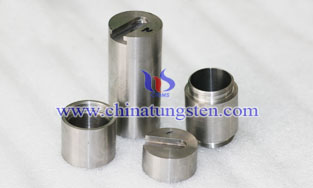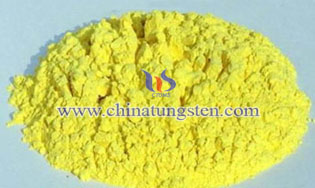Tungsten Market Trends and Macroeconomic Insights: Analysis and Outlook for May 2024
- Details
- Category: Tungsten's News
- Published on Wednesday, 08 May 2024 10:22
- Hits: 312
Analysis of latest tungsten market from Chinatungsten Online
1. Latest Tungsten Prices as of May 7, 2024
The tungsten price trend remains strong, with the market mainly in a stable and observant state during the May Day holiday period. Amid high costs, businesses are cautiously stocking up with low enthusiasm, and trading is conducted based on long-term orders or just-in-time needs, awaiting clearer guidance from institutions and tungsten enterprises.
The price of 65% black tungsten concentrates has reached around $20,714.3/ton at some high points, and the market's tight supply situation has yet to ease; The price of ammonium paratungstate (APT) has followed suit, reaching around $340.3/mtu, with smelters continuing to bear high pressure from raw materials and environmental costs; Tungsten powder prices remain stagnant at around $44.4/kg, and tungsten carbide powder prices hover around $43.9/kg, with poor market liquidity.
Hard alloy attempts to digest cost pressures, but overall consumption feedback from the backend of the industry chain is average.

2. Recent Macroeconomic Fluctuations
CPI Outlook: China's CPI estimate for 2024 is 3%. Following the rise in gas prices, the impending increase in Wuhan-Guangzhou and Shanghai-Guangzhou high-speed rail fares, along with adjustments on major railway lines such as Shanghai-Kunming, Shanghai-Hangzhou, and Hangzhou-Ningbo, all signal an upward trend in consumer prices. This move, amid a long period of market-determined prices and low prices in the private sector, reflects a strong administrative push to raise prices and has significant implications for price trends.
Expectations of US Interest Rate Cuts: With long-term interest rate hikes pushing US bond yields to as high as 5.5%, the US has limited room to maneuver on factors such as industrial production, prices, government bond interest, and bank interest. A rate cut, once implemented, will likely lead to commodity price increases, affecting gold and major non-ferrous metal prices, including tungsten product prices.
Bullish Outlook on Chinese Assets: Disappointing US non-farm payroll data for April has rekindled expectations of a US interest rate cut, sparking hopes for a rate cut in the third quarter. The offshore renminbi against the US dollar rose by over 400 points, surpassing 7.17 for the first time since January 25. Despite the disappointing US employment data, inflation remains high, making it insufficient for the US Federal Reserve to cut interest rates. This has limited recent gold price performance, with London spot gold and COMEX gold futures falling by 1.53% and 1.58%, respectively, for the second consecutive week.
Optimistic PMI: Despite a decline in April's ISM manufacturing PMI in the US and Friday night's release of April's non-manufacturing PMI, which were both lower than expected, signaling an economic slowdown and raising expectations of a US interest rate cut this year, China's PMI, non-manufacturing business activity index, and comprehensive PMI output index were 50.4%, 51.2%, and 51.7%, respectively, slightly lower than the previous month but still within the expansion range. China's overall economic sentiment remains positive.
Boost from New Industries: The concerted efforts of new production elements will boost the tungsten product's presence in industrial production. Tesla's FSD, dubbed the intelligent driving GPT, has been approved for use in China, indicating that the new energy vehicle industry is entering the second half of autonomous driving, accelerating software and hardware updates. Continued investment in electricity facilities such as power, which serve as the basis for computing power, ongoing high-speed rail connectivity domestically and abroad, and the replacement and optimization of old and new properties in real estate policies, all offer incremental prospects and high-quality demand for tungsten products in the medium to long term.

3. Prospects for Tungsten Product Prices
We believe that the fundamental logic behind the rise in tungsten product prices lies in the positive feedback between tungsten product consumer prices and volume.
During the long period before the May Day holiday, major tungsten product companies successively raised prices for raw materials, with prices for raw materials from major smelters generally rising by about 15%. Coupled with the tightening of raw material supply starting from tungsten concentrates, consumer end products such as hard alloys have also raised prices. This indicates that the consumer end has begun to accept the price increase of tungsten product raw materials as a fact and is actively spreading its costs to downstream consumers. As a result, the overall price of tungsten raw materials has reached a new equilibrium based on the new prices, consensus has been reached on the rise in tungsten product prices, and once the macroeconomy recovers, prices across society will see a general rise.
The upgrading and expansion of new high-quality productive forces such as large aircraft, new energy, and automobiles in China will serve as a testament to the tungsten product's ability to absorb incremental capacity on the consumer end.
Therefore, although tungsten product prices may experience minor corrections in the future, they will only be minor fluctuations within the upward cycle. As we said on May Day, the rise in tungsten product prices is underway!
Follow our WeChat to know the latest tungsten price, information and market analysis.

- Tungsten Manufacturer & Supplier, Chinatungsten Online: www.chinatungsten.com
- Tungsten News & Prices of China Tungsten Industry Association: www.ctia.com.cn
- Molybdenum News & Price: news.molybdenum.com.cn
- Tel.: 86 592 5129696; Email: sales@chinatungsten.com








 sales@chinatungsten.com
sales@chinatungsten.com